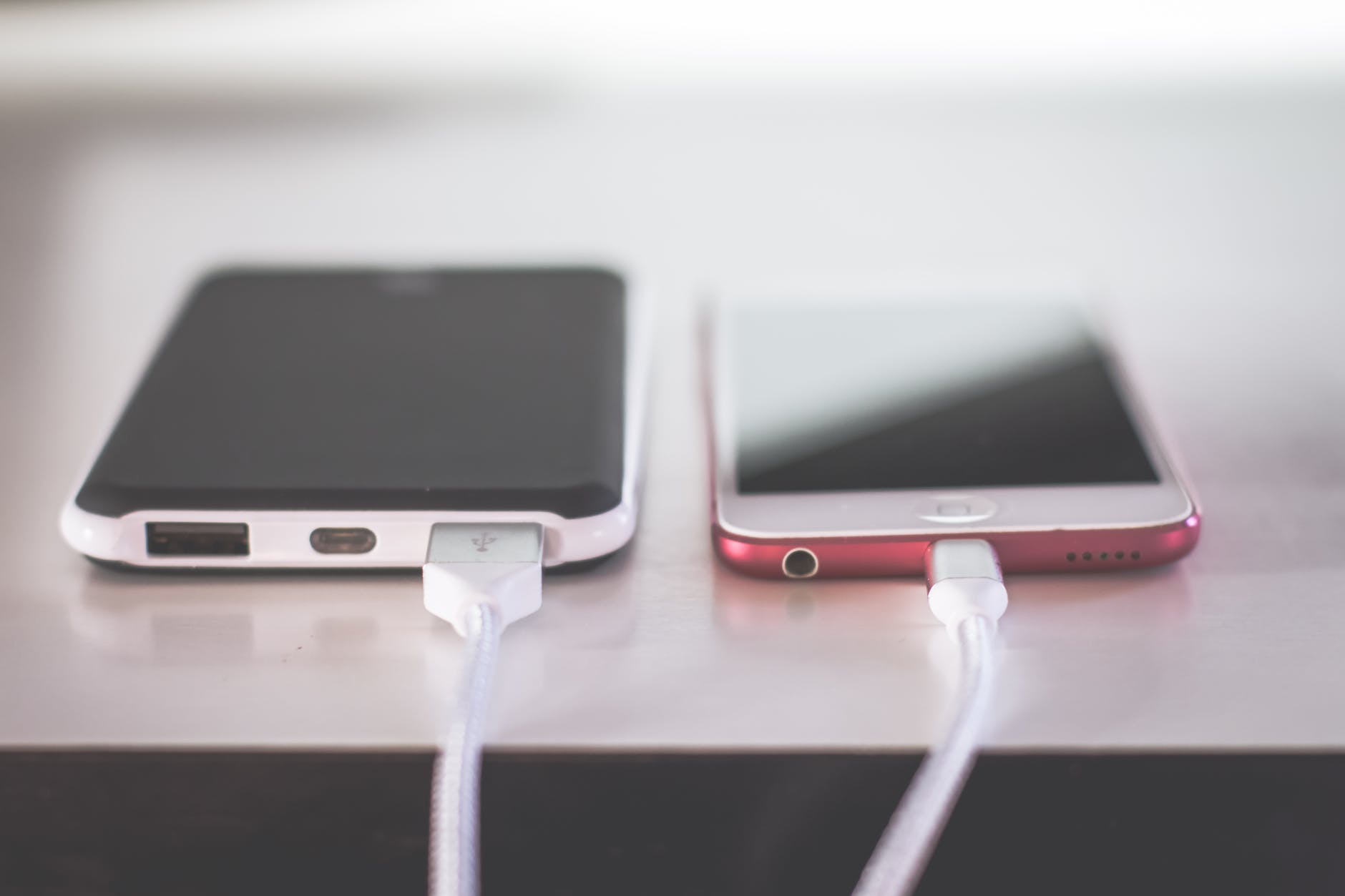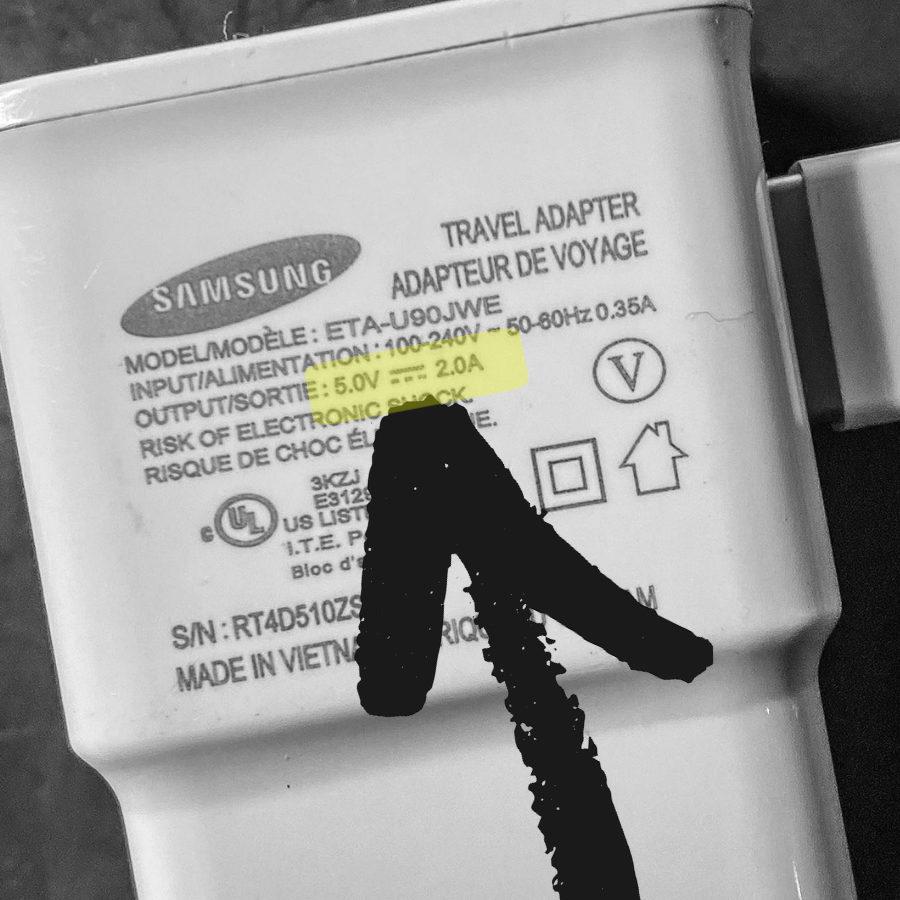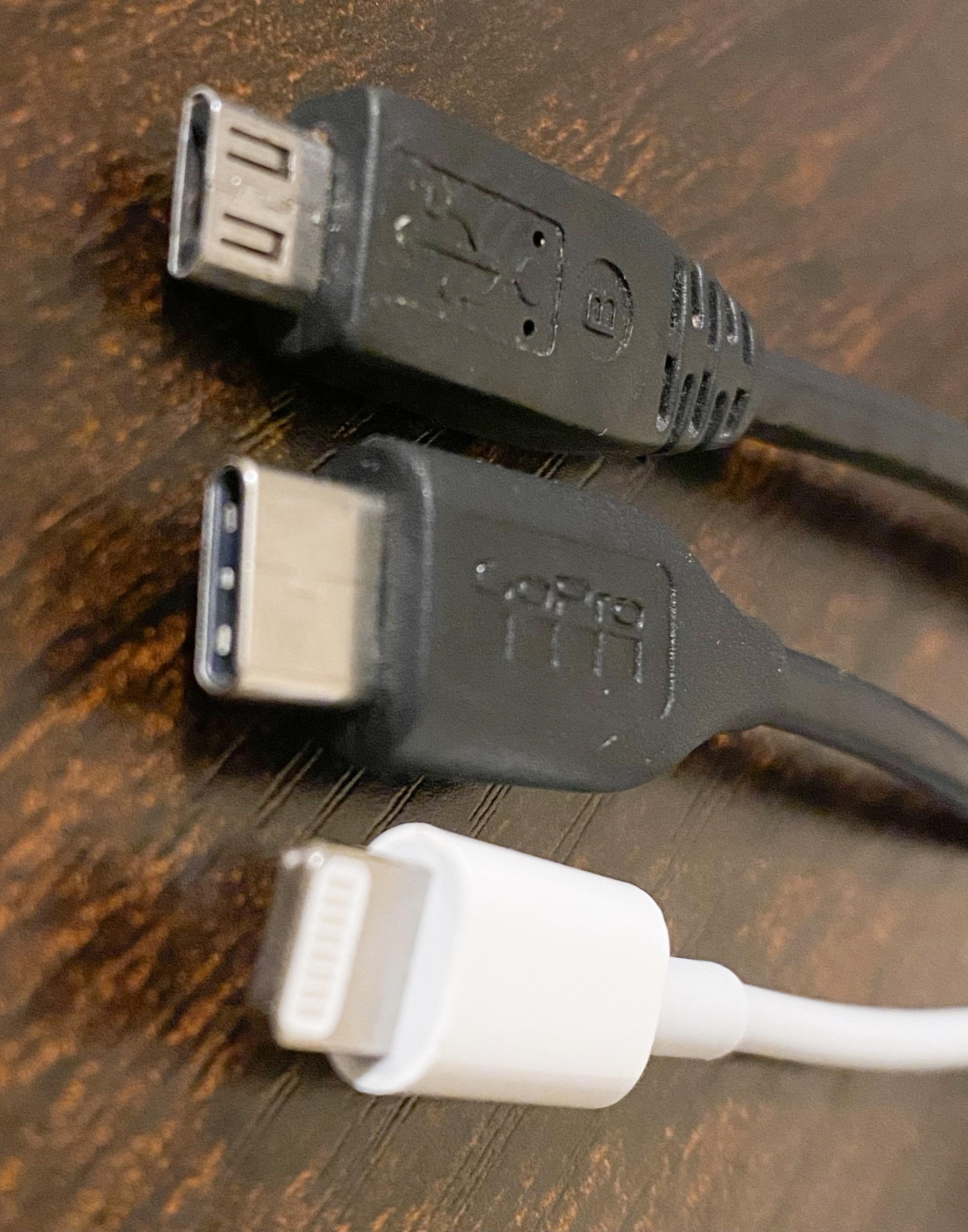
If you’ve purchased a phone or tablet charger, you know that options abound. Keep in mind, though, that there are key differences to keep in mind before grabbing the cheapest charger or the one that will ship the soonest. While cheap charges keep money in your bank account, they may also keep power out of your device!
As newer phones are introduced, there’s a race to have the fastest-charging phone and the longest battery life. In order to meet these two demands, chargers are forced to be more powerful. This means that you, the consumer, have to sort through a plethora of chargers on Amazon and other retailers.
Table of Contents:
- Power
- Wired Connections Types
- Wireless Charging
- Best Charging Block Options
Power: Watts, Amps, mA
I know these terms can sound scary, but let me explain what they mean for your phone.
Most chargers have a rating between 500 mA (.5 amps) and 3,000 mA (3 amps). Oftentimes, this is directly related to the speed at which your device will charge, but device limits will ultimately determine how quickly the phone or tablet will charge.
In the past, larger devices, such as iPads, had higher charge ratings (e.g., 2000 mA), while smaller devices, such as iPhones, had lower ratings (e.g., 500 mA). Today, though, most devices use a form of quick charging to limit the time you wait for your phone.
You will also see many device ratings listed in Watts. Watts = (Amps x Volts). As an example, a 5-volt charger at 2.0 amps will output 10 watts.

As a comparison, older iPhone/Android chargers were around 5 watts, while current fast charging options are closer to 18 watts. So, if you pick up an old charger and try to charge a new iPhone or iPad, you’ll be waiting significantly longer for that full charge!
Fortunately, more powerful chargers won’t overpower a modern phone. Rather, if a more powerful charger is used, the phone will charge at its maximum rate.
Wired Connections Types
When it comes to charging cables, there are three primary options: micro-USB, USB-C, and Apple’s lightning cable.

- Micro-USB chargers were the standard for many years, so they can be found on older Android, Windows, and Blackberry phones. They are also found on many of the small electronic devices that we have in our homes, such as cameras and toys. They are recognizable by the small D-shaped end that can only be inserted in a single direction.
- USB-C is slowly replacing the micro-USB charger for new Android devices and will continue to take-over charging for most other devices (e.g., GoPro Cameras). There are many benefits to this, such as an increased charging speed. Another benefit to this port is that it can be inserted in either direction.
- The Lightning port has been the charging port of choice for iPhones and iPads since 2012. These are easily recognizable by their flat surface that does not need to be inserted in a specific direction.
Wireless Charging
The concept of a wireless charger was enough to boggle the mind just a few short years ago. However, we now have the option, based on your phone, to charge without wires. But, not every wireless charger will get the job done as effectively as those high priced name-brand chargers. I was recently given a free wireless charger by a vendor, and it is nearly unable to charge to my iPhone 11 Pro.
Modern wireless phone chargers range from 5 watts to 18 watts. An iPhone, however, will currently only take advantage of 15 watts, while some Android devices take advantage of 18 watts.
In my experience, this 15-watt charger from Belkin does a great job of charging iPhones.
Best Charging Block Options
While the cheapest option certainly isn’t the best, there are several reasonably priced chargers on the market that excel at charging.
As you shop for chargers, you will need to be aware of two things: 1) the adapter that plugs into your phone (USB-C or lightning) and 2) the adapter that plugs into the charging block (USB-C or Standard USB). That’s right, new charging blocks have begun to use USB-C. If you choose one that uses USB-C at the charging block, don’t fret, it’s the wave of the future. You will, however, need to make sure that your charging cable is appropriate.
Check out one of the options below if you’re in the market for a new charging block.
Apple’s own 20-watt block charger. One thing to note with this charger is that the newer Apple charging cords use a Lightning port on the phone side and a USB-C port on the wall side. If you have an Apple cord that came with an iPhone XS/XR or older, you will need to replace the cord itself in order to use this block. This is one of the fastest options you will find to charge your phone.
Apple 20 watt USB-C Charging Block
Anker Elite Dual Port 24-watt charger. This block includes one standard USB port and one USB-C port, providing up to 32 watts. Keep in mind, though, that the individual USB-C port is limited to 20 watts. In my experience, Anker is a solid brand that provides good quality at a reasonable price.
Anker 32 watt dual port charging block with standard USB and USB-C
Belkin 15-watt Qi-certified wireless charger. If you’re interested in wireless charging, this is a great option for the price and charging speed. As I noted above, the iPhone’s maximum charging rate is 15 watts, so this will meet your iPhone needs and serve as a fast charger for most Android devices.
Belkin Quick Charge 15 watt Wireless Charging Pad
If you’re in need of cables, remember the advice above regarding micro-USB, USB-C, and Lightning, then take a look at these options.
| USB-C to Lightning | This is the current standard for iPhones, although it will require a charging block with a USB-C port. | Anker 6 ft. cable |
| Standard USB-C to Lightning | This is also a common cable used for iPhones, but you should verify that your charging block has a standard USB port. | Amazon Basics 6 ft. |
| USB-C to USB-C | This cable is used on most new Android devices and even the new iPad. In many cases, this can be used to charge new laptops such as the Macbook or Surface laptops if the correct charging block is used. | Anker 6 ft. cable, 100 watt |
| Standard USB to USB-C | This cable can also be used on most new Android devices and other peripherals that require the USB-C connection. These cables are sometimes not powerful enough for Macbooks and other laptops, so charging will be slow. | Anker 6 ft. cable |
I hope you learned something new about phone chargers from this article, and I hope you find the recommendations above to meet your needs.

You must be logged in to post a comment.